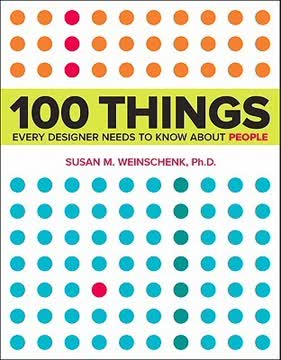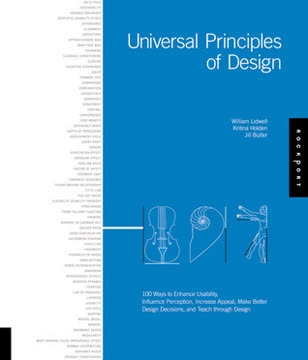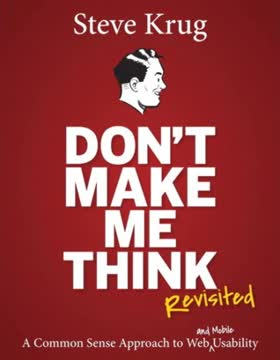Key Takeaways
1. Embrace the Designer's Dual Nature: Craft & Radical Thinking
To succeed as a designer requires being able to acknowledge both ways of seeing the world.
Possess dual personalities. A designer must be obsessively focused on minute details (like type forms) while also being open to radical, open-ended solutions. This seemingly contradictory nature is essential for success, allowing for both technical excellence and innovative problem-solving.
Rules are meant to be broken. While rules provide a foundation and prevent amateurish results (like using Comic Sans inappropriately), true creativity often comes from knowing when and how to break them. Experience guides this decision, allowing for intentional choices that might initially seem "wrong" but serve a specific concept.
Craft is vital. Beyond great concepts, meticulous craft separates professional design from amateur work. Focusing on the refinement of form, excellent execution, and using high-quality "ingredients" (typefaces, color palettes, imagery) is crucial for creating solutions that communicate clearly and seduce the viewer, rather than repelling them.
2. Master Typography: Rules, Refinement, and Readability
accept that legibility and readability are more important than typographic styling
Choose type wisely. Select typefaces based on appropriateness, not just trends or personal favorites. Understand typographic classification (serif, sans-serif, script, novelty) and the history behind classic fonts like Times New Roman or Garamond. Avoid overused or poorly constructed "free" fonts and system fonts for print when a distinctive voice is needed.
Refine typographic details. Go beyond basic settings. Learn letterform anatomy, manually kern headlines and unsightly pairs, and use ligatures where appropriate. Avoid distorting fonts with scaling or fake bold/italic styles. Pay attention to optical adjustments when mixing typefaces or using italics, ensuring consistent visual weight and alignment.
Prioritize clear communication. Legibility (can you distinguish letters?) and readability (can you read easily?) are paramount, especially for body copy. Avoid excessive typefaces in one layout, setting long passages in all caps, or using script/novelty fonts for body text. Manage leading, tracking, hyphenation, and line length (ideally 45-75 characters) to create a comfortable reading experience and avoid distracting "rivers" or orphaned/widowed lines.
3. Build Layouts with Structure and Visual Hierarchy
Creating clear hierarchy is an exercise in patience and restraint.
Utilize grids and structure. Don't be intimidated by a blank page; start with a plan. Use modular grids to align elements consistently, but know when to break out of the grid for visual impact. Design books and magazines as spreads, considering facing pages and crossovers, and periodically check printed proofs alongside screen views.
Establish clear hierarchy. Guide the reader's eye to the most important information first. Use scale, placement, color, and typographic styling (changing only one attribute at a time for headlines) to create a visual order. Avoid chaotic layouts with multiple competing elements.
Manage space intentionally. White space is a crucial design element, not just empty filler. Use it positively to frame elements, create visual grouping (using proximity, borders, rules), and improve navigation. Avoid trapping white space in the middle of a layout, which can disrupt flow. Ensure consistent spacing between elements throughout the design.
4. Understand and Apply Color with Intent
There is no such thing as a bad color combination.
Study color fundamentals. Learn about the color wheel, hue, saturation, and value. Understand the difference between additive (RGB) and subtractive (CMYK) mixing. Be aware of color gamuts and how colors change based on their surroundings or paper stock.
Choose colors purposefully. Draw inspiration from the natural world, great art, or client competitors, but don't rely on default palettes or personal preference alone. Consider color psychology and cultural meanings, but don't follow rules slavishly; be bold and unexpected when appropriate. Use color to create emphasis, movement, or tension.
Manage color for production. Ensure color settings are synchronized across applications and utilize color profiles. Specify print colors using CMYK or Pantone values, not RGB. Understand rich blacks, ink coverage limits (under 300%), and how tints screen. Use spot colors judiciously and communicate clearly with your printer about color expectations and proofs.
5. Select and Prepare Imagery with Technical Skill and Purpose
content is king.
Choose images wisely. Prioritize appropriateness and conceptual fit over technical perfection alone. Use stock images when necessary, but check for unique alternatives or consider original photography/illustration if the budget allows. Be mindful of client-supplied images, offering better alternatives tactfully if needed, and carefully consider the political content of all image choices.
Master image resolution and file formats. Ensure images for print have an effective resolution of 300ppi at their intended size. Resample images correctly in Photoshop before importing to layout software. Understand different file formats (TIFF, JPEG, PNG, PSD, DNG) and their best uses.
Edit images nondestructively. Use Photoshop's Adjustment Layers and Smart Filters for flexible editing. Eschew deletion in favor of masking for cutouts. Avoid using filters to disguise low-quality images or desaturating them to "fix" problems. Respect the original composition and avoid excessive cropping or distorting images.
6. Design Logos and Icons for Identification and Adaptability
Good logos don’t describe a company’s activities; they identify its values.
Focus on identification. Logos should identify an organization, not describe everything it does. Design for mnemonic value, using simple, distinct shapes and colors that are easily remembered (like Apple or FedEx).
Ensure adaptability. Create logos that work across various applications: print, online, signage, embroidery, etc. Design in black and white first to ensure the form is strong, then apply color. Use vectors whenever possible for unlimited scalability without quality loss.
Keep icons simple. Icons should convey a single, clear idea. Understand the difference between similar, example, symbolic, and arbitrary icons. Avoid overly complex designs that become paintings rather than functional symbols.
7. Navigate Production and Printing with Precision and Collaboration
Printing is a physical process that involves people, trucks, machines, ink, and paper.
Communicate clearly with printers. Don't assume printers understand your needs; itemize every aspect of the job. Get printers involved early to discuss paper stock, binding techniques, special finishes (embossing, foil stamping), and potential cost savings or complications.
Prepare files meticulously. Include at least 3mm of bleed on all artwork. Clean up your pasteboard before sending files. Ensure all black text is set to overprint background colors to avoid registration issues. Use PDF/X standards for artwork delivery.
Verify proofs and materials. Always insist on obtaining hard proofs on the correct paper stock, even for simple jobs. Don't rely on laser proofs for color accuracy. Check client-supplied materials immediately upon receipt to ensure they meet specifications. Build contingency time into schedules for unexpected delays.
8. Prioritize the Idea and Research Beyond Design Resources
The visual exists to present and support the idea, and if the idea isn’t great, the visual won’t be great either, despite all your efforts.
Start with the concept. Before focusing on visuals, grids, or typefaces, spend time brainstorming and developing the core idea that answers the design brief. The visual is merely the vehicle for the idea.
Research broadly. Don't limit inspiration to design annuals or portfolio websites, which show ideas already had. Read books on diverse subjects, visit libraries, and use Google as a starting point, not the sole source. Research provides fresh perspectives and informs unique solutions.
Avoid gratuitous styling. Don't use filters, trendy graphics, or excessive decoration just to make something look "designed." If an element doesn't serve the idea or improve communication, remove it. A strong concept doesn't need superficial embellishments.
9. Manage the Practice: Clients, Budgets, and Professionalism
Compensation is necessary for the client to value the work and respect the designer.
Formalize client relationships. Insist on a written brief for every project and ask clarifying questions. Confirm all deliverables and agree on costs in writing before starting work. Question budgets that are clearly insufficient for the brief.
Be professional and ethical. Don't knowingly plagiarize; strive for originality. Dress appropriately for clients and employers. Don't present options you don't want chosen. Be nice to colleagues at all levels, as relationships matter.
Value your work and time. Don't work for free; compensation ensures the client values your skills. Invoice regularly and on time to maintain cash flow. Avoid taking assignments purely for the money, as they often go poorly. Take days off, especially as a freelancer, to maintain sanity and creativity.
Last updated:
Review Summary
Graphic Design Rules receives generally positive reviews, with an average rating of 3.89 out of 5. Readers appreciate its comprehensive coverage of design principles, accessible writing style, and practical advice for both beginners and experienced designers. The book's structure of 365 tips is praised for its conciseness, though some find it inconsistent or repetitive. Many readers find it a valuable reference guide, particularly for typography and layout. Some criticism is directed at occasional contradictions, overuse of sarcasm, and focus on specific software tools.
Similar Books









Download PDF
Download EPUB
.epub digital book format is ideal for reading ebooks on phones, tablets, and e-readers.




